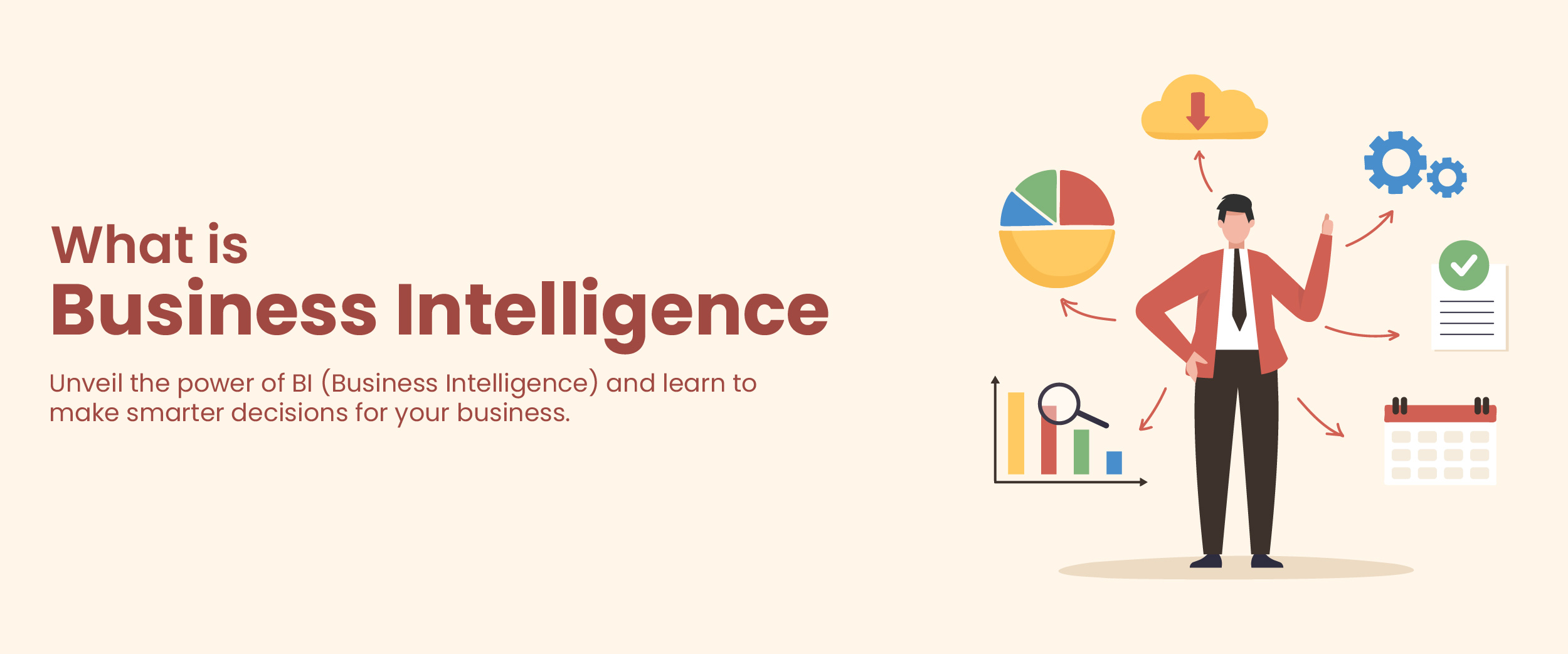What is Business Intelligence? – Types, Advantages, Trends, & More
In the dynamic business world, it is more crucial than ever to have access to data-driven perceptions, and that’s where business intelligence (BI) comes into play. The growing importance of these business intelligence tools is the reason that the global BI market is expected to reach $33.3 billion by 2025.
BI technology is a tool that allows modern businesses to exploit data to make critical decisions, based on facts, to enhance their functions and profit margin. In this blog, we will understand what is business intelligence, its components, benefits, and examples.
Business Intelligence Overview
Business intelligence (BI) is a technology-driven process that enables organizations to collect, store, access, and analyze data to gain insights into their business operations. It provides users with the ability to make informed decisions based on real-time information. BI tools are used by businesses of all sizes for various purposes such as forecasting trends, identifying correlations between different datasets, understanding customer behavior, and optimizing operational processes. These tools can range from simple database queries or spreadsheets to complex analytics platforms.
Organizations use Business Intelligence solutions to gain valuable insight into customer behavior, operational efficiency, and market trends. By leveraging data-driven decision-making tools like dashboards, reports, and predictive models businesses can improve operations across all departments while gaining a competitive edge over competitors who don’t have access to such technology.
Types of Analysis in Business Intelligence
Business intelligence can be majorly classified into three types. They are as follows:
Descriptive Analytics
It uses historical data to gain insight into what has happened in the past. Descriptive analytics allows organizations to identify areas for improvement, allowing them to take actionable steps toward optimizing their processes and becoming more efficient.
Predictive Analytics
It is a type of Business Intelligence that uses predictive modeling techniques to forecast future events based on current and past data sets. By using predictive analytics businesses can make informed decisions about how best to respond to maximize profits or reduce costs.
Prescriptive Analytics
Prescriptive Analytics takes predictive analytics one step further by providing recommendations about how an organization should act in response to certain conditions or situations. This allows organizations not only to predict outcomes but also proactively decide what actions should be taken to optimize the desired result.
To learn more about what is business intelligence, you can pursue a business analytics course.
Advantages of Business Intelligence
Let’s look at some of the benefits of using business intelligence:
- Improved Decision-making- With better access to data and analytics platforms, organizations can make decisions based on real-time information rather than guesswork or intuition alone.
- Increased Efficiency- It provides users with detailed insights into their operations which enables them to optimize processes as well as identify any potential problems before they become an issue.
- Enhanced Customer Service- Data-driven insights allow businesses to gain valuable insights from various sources such as customer databases, enterprise systems, and external sources like social media which helps them better understand their customers’ needs and preferences to provide tailored services accordingly.
- Increased Profitability- It can help businesses increase their profitability by identifying new market opportunities, optimizing marketing campaigns, and reducing costs.
Become a Data Scientist and earn a total of 35000 stipend with our data science placement guarantee course.
Disadvantages of Business Intelligence
Aside from the benefits, there is also some downside to business intelligence. Let’s have a look
- Poor Data Quality – If businesses are not able to accurately collect, store and manage their data then any insights derived from it will be inaccurate or incomplete which can lead to bad decisions being made.
- Cost – It requires significant resources including personnel, hardware, software, and training for an organization to successfully deploy BI tools across its operations.
- Takes Time – Getting started with Business Intelligence may take some time due to all the necessary steps required from setup through implementation and testing before it becomes fully operational within an organization’s infrastructure.
- Skill Gap – Without sufficient knowledge about how best to utilize such technology organizations may find themselves unable to maximize ROI from their investments in terms of cost savings and increased efficiency gains.
Examples of Business Intelligence Tools
Some of the most popular business intelligence tools available in the market are as follows:
- SAS Business Intelligence – SAS is one of the most comprehensive enterprise-level intelligence platforms available today, providing a range of features designed for organizations looking for advanced analytics tools including predictive modeling capabilities as well as machine learning algorithms that help uncover hidden patterns within data sets.
- Power BI – Power BI is a tool by Microsoft. Power BI offers powerful analytics solutions for businesses both large and small. Power BI enables organizations to analyze complex datasets using intuitive tools such as natural language queries, interactive visuals, automated report creation, and AI-driven predictive modeling capabilities.
- Tableau – Tableau is a popular Business Intelligence (BI) tool that provides users with insights into their data by leveraging powerful visualizations. Its drag-and-drop interface makes it easy to create interactive dashboards, reports, and charts that can be easily shared across the organization or even externally with customers and partners.
Conduct a comparative analysis between Power BI and Tableau to determine optimal suitability for your requirements.
Trends in Business Intelligence
Some of the latest trends in business intelligence are as follows:
- Artificial Intelligence – Artificial Intelligence (AI) is at the forefront of this evolution as it enables businesses to automate routine tasks while providing real-time insights into customer behavior or market trends. This technology allows companies to make decisions faster with greater accuracy thereby maximizing ROI from their investments.
- Machine Learning – Machine Learning algorithms are becoming increasingly popular for analyzing large datasets to uncover hidden patterns and relationships which can be used for predictive modeling or forecasting purposes.
- Cloud Analytics – Cloud analytics has become an important aspect of Business Intelligence given its ability to provide insights without needing to install any software which significantly reduces costs associated with traditional solutions. Additionally, cloud analytics provides users scalability flexibility as well as security measures to keep data safe and secure no matter where accessed from.
- Collaborative BI – Collaborative BI platforms enable teams to work together efficiently regardless of geographic location allowing them to share visualizations, dashboards, reports, etc., enhancing the communication process organization-wide.


Conclusion
In today’s technology-focused world, it is important to know about what is business intelligence and how best to utilize it. By leveraging business intelligence technologies such as predictive modeling and machine learning algorithms, businesses can gain deeper insight into consumer behavior than ever before possible to stay ahead of the competition.







